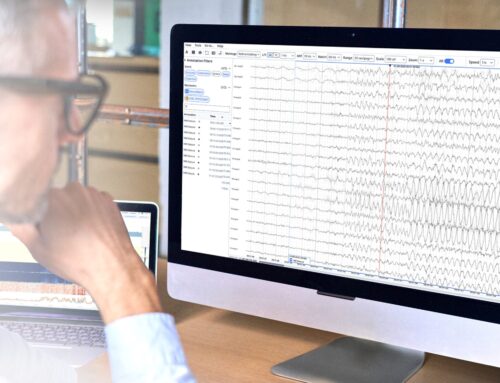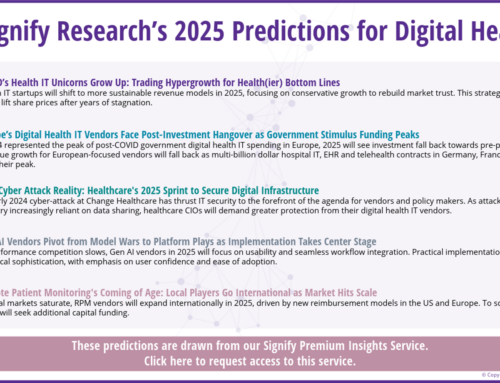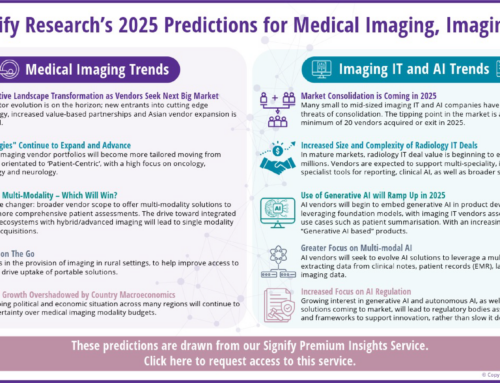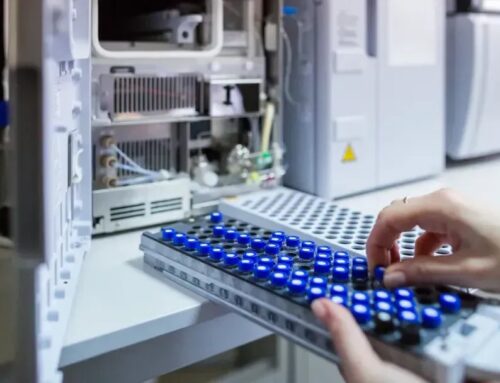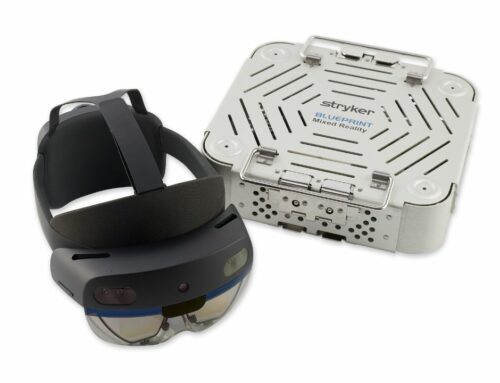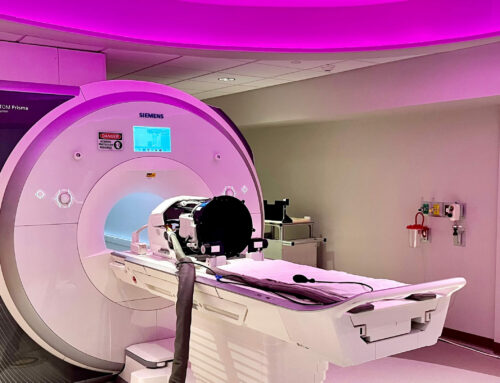Without a doubt 2020 has been a devastating year for many; the impact of COVID-19 on both personal lives and businesses has had long-term consequences. At the end of September, the number of COVID-19 cases fell just short of 350 million, with just over 1 million deaths reported. The expectation of a second peak in many countries exposed to the deadly illness is being handled with care, with many governments attempting to minimize the impact of an extreme rise in cases.
COVID-19 the aftermath will be the new normal?
Despite the chaotic attempts to dampen the impact of a second peak, it is inevitable that healthcare facilities will be stretched once again. However, there are key learnings to be had from the first few months of the pandemic, with several healthcare providers opting to be armed with as much information to tackle the likely imminent surge of patients with COVID-19 head on. The interest in solutions that offer support to clinicians through data analysis is starting to emerge with several COVID-19 specific Artificial Intelligence (AI) algorithms filtering through the medical imaging space.
Stepping into the ICU, the use of analytics and AI-based clinical applications is drawing more attention. Solutions that collect relevant patient information, dissect the information and offer clinical decision support are paving the way to a more informed clinical environment. Already, early-warning scoring, sepsis detection and predictive analytics were becoming a focus. The recent COVID-19 outbreak has also driven further interest in COVID-19 specific applications, and tele-ICU solutions, that offer an alternative way to ensure high-risk patients are monitored appropriately in the ICU.
What does the future hold?
Signify Research is currently in the process of assessing the uptake of clinical decision support and AI-based applications in the high acuity and perinatal care settings. An initial assessment has highlighted various solutions that help improve not only the efficiency of care but also improve its quality. Some of the core areas of focus include:
Clinical Decision Support & Predictive Analytics
Due to the abundance of patient data and information required to be regularly assessed and monitored, the high-acuity and perinatal care settings benefit from solutions offering clinical decision support.
The ICU specifically has been a focus of many AI solution providers, with real-time analysis and support of data to provide actionable clinical decision support in time-critical situations. Clinical decision support solutions can collate data and identify missing pieces of information to provide a complete picture of the patient’s status and to support the treatment pathway. Some of the key vendors pathing the way for AI in clinical decision support in the ICU include: AiiNTENSE; Ambient Clinical Analytics; Etiometry; BetterCare; AlertWatch; and Vigilanz Corp.
Early-warning
Early-warning protocols are commonly used in hospitals to flag patient deterioration. However, in many hospitals this is often a manual process, utilizing color coding of patient status on a white board in the nurse’s station. Interest in automated early-warning systems that flag patient deterioration using vital signs information is increasing with the mounting pressure on stretched hospital staff. Examples of early-warning software solutions include the Philips IntelliVue Guardian Solution and the Capsule Early Warning Scoring System (EWSS). Perigen’s PeriWatch Vigilance is the only AI-based early-warning scoring system that is developed to enhance clinical efficiency, timely intervention and standardization of perinatal care.
The need for solutions that support resource-restricted hospitals has been further exacerbated during the COVID-19 pandemic. Many existing early-warning vendors have updated their surveillance systems to enable more specific capabilities for COVID-19 patients, specifically for ventilated patients. Companies such as Vigilanz Corp’s COVID Quick Start, and Capsule Tech’s Clinical Surveillance module for ventilated patients enables healthcare professionals to respond to COVID-19 and other viral respiratory illnesses with customizable rules, reports, and real-time alerts.
Sepsis Detection
Sepsis is the primary cause of death from infection, accounting for 20% of global deaths worldwide. Sepsis frequently occurs from infections acquired in health care settings, which are one of the most frequent adverse events during care delivery and affect hundreds of millions of patients worldwide every year. As death from Sepsis can be prevented, there is significant focus around monitoring at-risk patients. Several health systems employ their own early-warning scoring protocol utilizing in-house AI models to help to target sepsis. HCA Healthcare, an American for-profit operator of health care facilities, claims that its own Sepsis AI algorithm (SPOT) can detect sepsis 18-hours before even the best clinician. Commercial AI developers are also focusing their efforts to provide supporting solutions. The Sepsis DART™ solution from Ambient Clinical Analytics uses AI to automate early detection of potential sepsis conditions and provides smart notifications to improve critical timeliness of care and elimination of errors. Philips ProtocolWatch, installed on Philips IntelliVue bedside patient monitors, simplifies the implementation of evidence-based sepsis care protocols to enable surveillance of post-ICU patients.
Tele-ICU
The influx of patients into the ICU during the early part of 2020 because of COVID-19 placed not only great strain on the number of ICU beds, but also the number of healthcare physicians to support them. Due to the nature of the illness, the number of patients that were monitored through tele-ICU technology increased, although the complex nature of implementing a new tele-ICU solution has meant the increase has not been as pronounced as that of telehealth in primary care settings. However, its use has enabled physicians to visit and monitor ICU patients virtually, decreasing the frequency and need for them to physically enter an isolation room. As the provision of healthcare is reviewed following the pandemic, it is likely that tele-ICU models will increase in popularity, to protect both the patient and the hospital staff providing direct patient care. Philips provides one of the largest national programs across the US with its eICU program. Most recently, GE Healthcare has worked with Decisio Health to incorporate their DECISIOInsight® into GE Healthcare’s Mural virtual care solution, to prioritize and optimize ventilator case management. Other vendors active within the tele-ICU space include Ambient Clinical Analytics, Capsule Health, CLEW Med and iMDsoft.
Figure 1 Signify Research projects the global tele-ICU market to reach just under $1 billion by 2024.
Interoperable Solutions
More and more solutions are targeted toward improving the quality of patient care and reducing the cost of care provision. With this, the requirement for devices and software to be interoperable is becoming more apparent. Vendors are looking to work collaboratively to find solutions to common problems within the hospital. HIMMS 2020 showcased several collaborations between core vendors within the high acuity market. Of note, two separate groups demonstrated their capabilities to work together to manage and distribute alarms within a critical care environment, resulting in a quieter experience to aid patient recovery. These included:
- Trauma Recovery in the Quiet ICU – Ascom, B Braun, Epic, Getinge, GuardRFID, Philips
- The Quiet Hospital – Draeger, Epic, ICU Medical, Smiths Medical, Spok
Signify Research will be assessing the developments in the high-acuity and perinatal IT market in its upcoming report High-Acuity and Perinatal IT – 2021. It will provide a dive deep analysis of the innovative solutions entering the clinical information systems market, including analytics and artificial intelligence. For more information, or to arrange a discussion on the above topics, please contact Kelly Patrick.





